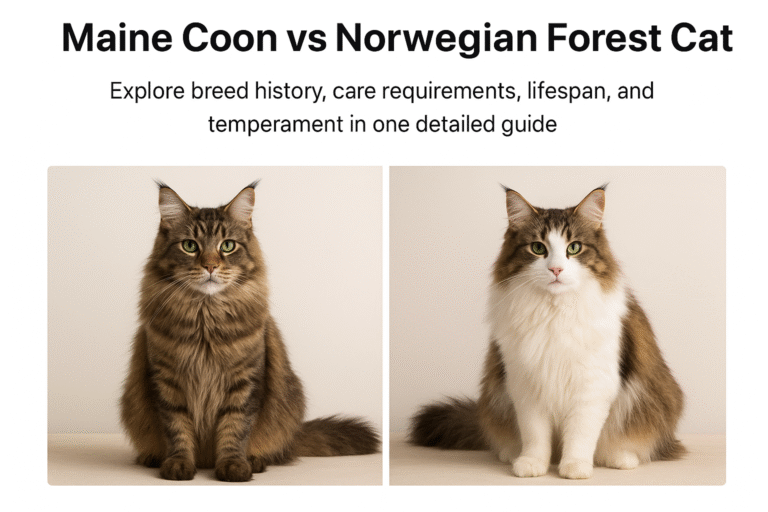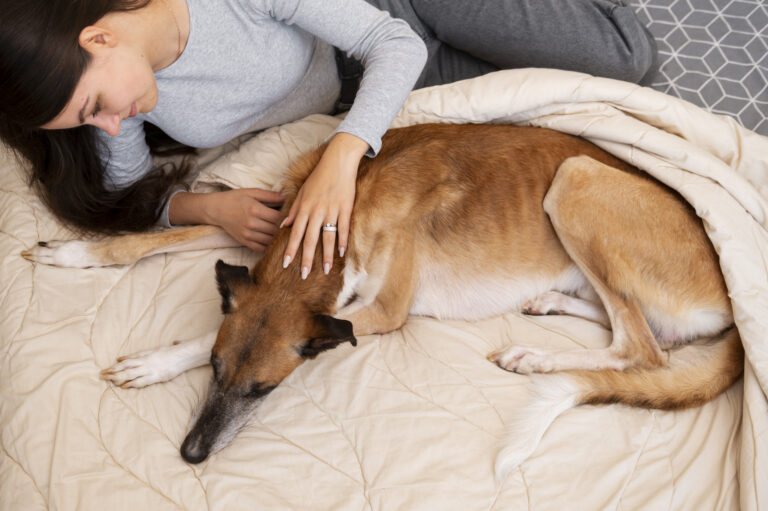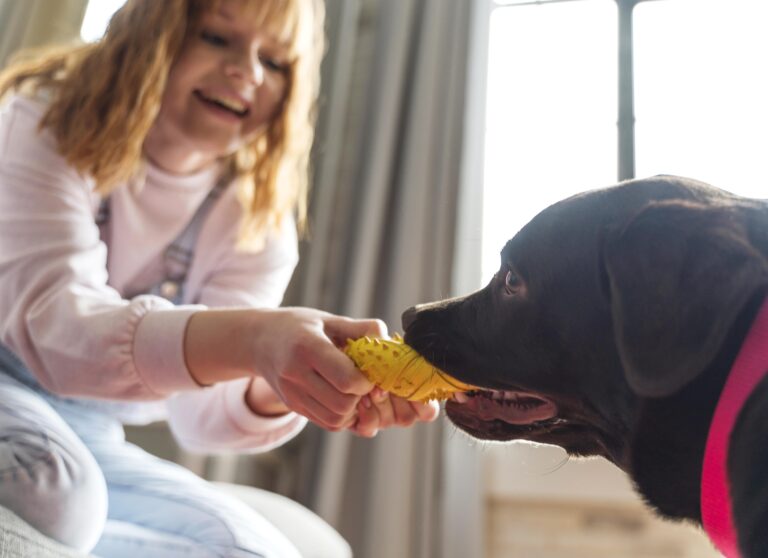Dog Nausea: What to Do, Causes, Symptoms, and Best Treatment
Dog Nausea is not just a vomiting , but it is more than that your little pups are crying silently , it is usually the cause of your dog’s sudden “off-ness”–drooling or lip-licking; refusing to eat, or dry-heaving. This guide will give you clear, human-friendly answers (such as nausea in dogs, upset stomach in dogs, canine vomiting and motion sickness in pets) along with compact AI-mode solutions that pet parents are actually searching for. These three paragraphs will give you an instant primer on what to look for, what can be done safely at home and when urgent veterinary treatment is needed.
Early signs of nausea in dogs include repeated lip-licking or drooling and swallowing, restlessness, reduced appetite, or mild vomiting. The causes of nausea in dogs can range from simple dietary mistakes and sudden changes in food to medication side effects and serious conditions like pancreatitis or kidney or liver diseases, intestinal obstruction or toxin-exposure. This paragraph uses a practical language with secondary keywords such as dog motion sickness symptoms
https://www.youtube.com/watch?v=9aNQU7_ifk0
Is this a mild stomach upset or Dog Nausea?
Before vomiting, dog nausea can start with small behavioral changes, such as lip-licking or drooling. Early warning signs can help owners avoid an escalation of symptoms. Mild cases are manageable at home, while severe cases require a veterinarian.
- Be on the lookout for lip licking or drooling.
- You may notice a decrease in appetite or a desire to skip your favorite foods.
- Watch for signs of restlessness or hiding.
- Look for mild retching, but no vomiting.
- If signs worsen in 6-12 hours, contact your vet.
What are the common causes of Dog Nausea?
The most common triggers are dietary indiscretion, sudden changes to diet, motion sickness, medication, and intestinal parasites. Systemic problems like kidney, liver, or pancreatitis should also be taken into consideration if the symptoms persist.
- Recent diet change or people-food ingestion.
- Motion sickness while traveling.
- Side effects from medications and vaccines
- Infections of the gastrointestinal tract caused by parasites, viruses or bacteria.
- Organ disease that is underlying (pancreas kidneys liver)
How to recognize emergency signs when Dog Nausea becomes dangerous
If you notice a persistent retching or a distended or painful abdomen, bloody stool or vomit, collapse or an inability to drink water, seek immediate medical attention.
- Retching that is unproductive and continues continuously (suspect GDV).
- Blood in the stool or vomit is a sign of fresh or digested bleeding.
- A hard, painful, or swollen abdomen.
- Severe lethargy, collapse, or pale gums.
- Signs of dehydration: Sunken eyes, dry gums
First things your vet will look for Dog Nausea
This step-by-step approach to diagnosis prevents misdiagnosis, and helps vets provide the best treatment.
- Detailed history: diet, travel, meds, toxin exposure.
- Full physical examination with abdominal palpation.
- Organs are checked by a CBC panel and a chemistry panel.
- Tests for parasites in the urine and fecal samples.
- If you suspect an obstruction or organ disease, use X-rays or ultrasounds.
First day owner plan: What to do during the first 0-24 hour period of nausea in dogs
If symptoms persist, a calm and structured plan is best. Withhold food for a short time, give controlled water, monitor carefully, then reintroduce bland food only after the vomiting has stopped.
- Remove food for eight to twelve hours (not puppies/diabetics).
- Offer water or ice chips in small quantities frequently.
- Rest and calm your dog.
- Start with bland food (chicken + rice).
- Keep a record of the time, amount, and appearance for your vet.
Dog Nausea
If the symptoms are mild, you can try a bland diet and fluid control. Avoid human medications and contact your vet if they return, or if it is a senior dog, a puppy or has a chronic illness.
- Bland diet: white rice + boiled chicken without skin.
- Instead of a large meal, small meals should be eaten frequently.
- If advised, offer electrolytes and rehydration fluids.
- Probiotics approved by veterinarians can help support recovery.
- Do not give NSAIDs or Pepto Bismol to your pet without vet approval.
Dog nausea
Veterinarians prescribe maropitant for motion sickness, nausea, and acute vomiting. They may also use metoclopramide or ondansetron depending on the cause and age.
- Maropitant (Cerenia), a widely used antiemetic.
- Ondansetron is used to treat nausea caused by chemotherapy or severe sickness.
- Metoclopramide – for motility problems
- Dehydration is treated with IV fluids and medications.
- Dosage varies; always use under veterinary supervision.
Motion sickness: Why travel causes Dog nausea, and how to prevent
(PetMD) Motion sickness is caused by inner-ear sensory imbalance and anxiety. Prevention strategies include pre-trip crate stabilization and gradual conditioning for travel. Vet-prescribed antiemetics are also available for sensitive dogs. (PetMD)
- Reduce the risk of vomiting by fasting 8-12 hours prior to travel.
- Stabilize your dog by using a crate.
- Short, progressive practice trips to desensitize.
- Pre-trip, consider taking ondansetron (or maropitant) as prescribed by your vet.
- Natural anxiety aids such as calm pheromone sprays and natural calming agents may be helpful.
Differentiating nausea from regurgitation, and other GI symptoms
The causes and treatment of nausea and vomiting are different.
- Nausea is characterized by retching, drooling and lip-licking.
- Regurgitation is the effortless expulsion by the body of food that has not been digested.
- To differentiate, observe the timing of meals.
- Different diagnostics (esophageal vs gastric).
- Treatment is based on the root cause (motility or obstruction).
When Dog nausea becomes chronic – causes and next steps
Today’s Veterinary Practice (https://todaysveterinarypractice.com/gastroenterology/inflammatory-bowel-disease/dogs-cats/?utm_source=chatgpt.com) offers a comprehensive guide to identifying chronic nausea and vomiting. This can include imaging and endoscopy/biopsy.
- IBD and food-responsive enteropathy are the two main causes.
- Chronic pancreatitis is characterized by recurrent episodes.
- Consider endocrine diseases (Addison’s disease).
- Diet trials: novel protein or hydrolyzed diets.
- Endoscopy/biopsy is recommended for undiagnosed, persistent cases.
What to look for if your dog is experiencing nausea?
It’s not always a mild digestive problem that causes dog nausea. Sometimes, it is a sign of underlying health conditions requiring urgent veterinary care. Canine nausea has many less common, but serious causes. Recognizing these can help save your dog’s life.
Don’t ignore signs of sudden severe illness.
Act quickly if your dog becomes lethargic or swollen, or if he starts retching but doesn’t vomit. Here are some serious conditions that every pet owner needs to be aware of.
- Bloat or Gastric Dilatation Volvulus: Retching that is not productive and an enlarged abdomen are signs of emergency.
- Foreign body obstruction: Ingesting bones, toys, or cloth may cause nausea or vomiting.
- Gastrointestinal Neplasia (Cancer). This cancer is often characterized by chronic vomiting and loss of weight.
- Systemic nausea: can develop due to advanced liver or kidney failure.
- Toxin ingestion: Substances such as xylitol or rodenticides , toxic plants , can cause nausea and vomiting.
For persistent or unexplained nausea, sensitive-stomach formulas and consistent feeding can reduce recurrence. According to petMD dogs who experience repeated nausea may benefit from prescription diets or nutritional counseling.
Pro tips for managing and preventing dog nausea:
- Introduce new foods over 7-10 day.
- Instead of eating large portions, feed smaller meals more frequently.
- Avoid feeding spicy and fatty foods.
- You should follow your veterinarian’s instructions for prescription GI foods.
- Keep food and garbage bins out of reach.
When Dog Nausea Turns Serious: Why Is My Dog Throwing Up Blood?
Why is my Dog Throwing Up blood ? Although mild Dog nausea is often resolved with rest and diet, vomiting blood (medically known as hemotemesis), is a warning sign your pet might need immediate veterinary care. It’s not just stomach upset if your dog vomits blood. It could be a sign of internal irritation or organ complications.
The blood in vomit may appear as red streaks or clots. It can also look like coffee grounds. Each appearance gives an indication of the cause. Most often, blood vomiting is a sign of severe intestinal inflammation or a foreign body ingestion. It can also be attributed to advanced liver disease or pancreatitis.
Causes for a dog to vomit blood
- Stomach Ulcers can be caused by medications (NSAIDs and steroids) or infection.
- Ingestion of foreign objects can cause internal bleeding and irritation.
- Severe nausea that results in tiny tears on the esophagus.
- Toxin Exposure, such as poisonous plants or rodenticides.
- Liver and kidney disease is often accompanied by chronic nausea.
What you should do immediately
Do not wait if your dog shows symptoms of nausea like drooling or lethargy.
- Call your veterinarian immediately, or visit an animal emergency clinic.
- Take a photo or a sample to aid in diagnosis.
- Do not give your dog food or medications before a veterinarian evaluates it.
- Monitor your hydration to prevent vomiting.
- Tell your veterinarian about recent toxins, food or medications.
How to Document and Record Dog Nausea Episodes
Your vet can identify the cause of nausea faster with accurate documentation. According to The Today’s Veterinary Practice tracking patterns can allow for targeted diagnosis as well as effective treatment planning.
How to record your dog’s symptoms of nausea:
- Record the exact timing for drooling or vomiting.
- Note recent food, treats or chemical exposures
- Take photos if you feel it is safe to do so.
- Track your dog’s water intake, energy levels , and appetite every day.
- Share your symptom log before diagnostic tests with your veterinarian.
Supportive Treatment while Awaiting Veterinary care for Dog Nausea
You can help your dog stabilize his condition by providing a gentle supportive care while you wait for an appointment with a veterinarian. Temporary home management is a good way to reduce discomfort and avoid dehydration.
Supportive Care Tips for Effective
- Serve small portions of bland foods such as boiled chicken or rice.
- Make sure your dog is hydrated by giving him fresh water or electrolyte solutions recommended by the vet.
- Allow your pet to rest in an environment that is calm and free of stress.
- Do not give human medication to your pet unless it is prescribed by your veterinarian.
- After 12-24 hours, reintroduce your regular diet .
However, avoid using human medications and escalate the situation if any red flag symptoms are present.
- Small sips are better than large gulps.
- Keep your dog in a quiet, low-stress area.
- Avoid self-medicating using over-the counter human drugs.
- If vomiting stops, introduce tiny bland meals.
- If your condition worsens, you should seek emergency medical attention.
Quick checklist for when to seek emergency medical care for Dog Nausea
This simple checklist will help owners determine whether to seek immediate care from a vet or ER if they notice any of the following: continuous retching or bloody stools, distention, collapse or an inability to remain hydrated.
- Retching that is unproductive and continuous.
- An abdominal distension or pain.
- Blood in vomit or stool.
- Collapse, extreme weakness, or pale gums.
- Signs of severe dehydration include inability to drink water.
Here is a final version of the FAQ section that has been optimised for UK markets and centered on the focus keyword canine nausea. Each question and its answer are written in a conversational (AI-mode) language and are ready to be implemented into the FAQ schema.
Dog Nausea FAQ
Q1. What causes my dog to be nauseous?
A1. A dog’s nausea may be caused by simple things like a change in diet, motion sickness, or side effects of medication. It can also be a sign of more serious conditions, such as kidney or liver disease or gastrointestinal blockage. It is important to recognize early symptoms and act accordingly. (PetMD)
Q2. What are some early signs that I should be looking out for in my dog?
A2. Early signs of nausea in dogs include repeated lip licking, drooling and swallowing without food. They may also show restlessness, loss of appetite or mild retching. These subtle changes can often be seen before full-blown vomiting, giving you the opportunity to intervene.
Q3. When should I contact a vet if my dog is experiencing nausea?
A3. If your dog is vomiting repeatedly, has blood or distended abdomen (possible GDV/bloat), appears very lethargic, or can’t keep water down, you should treat it as an emergency. These symptoms indicate serious conditions that require immediate veterinary care. Dog health
Q4. What can I do immediately at home to help my dog if it shows signs of sickness?
A4. If your dog is experiencing mild nausea but no alarming symptoms then you should withhold the food for 8-12 hrs (unless it’s a puppy or diabetic) and offer small amounts water. Then introduce a bland, frequent diet (boiled fish or chicken + white rice). If symptoms persist, call your veterinarian. (Blue Cross)
Q5. Can motion or travel cause dog nausea and how do I prevent it?
A5. Yes, travel and motion are common causes of dog nausea. For prevention, feed your dog light, make sure your dog is stable, take short trips to condition him, and consult your vet for anti-nausea medications if you dog is susceptible. (Purina)
Q6. Can I give my dog anti-nausea medicine for humans?
A6. You should not administer anti-nausea and anti-vomiting medications for humans to your dog unless a veterinarian has approved it. Based on safety and diagnosis, dogs require pet-specific treatment. Always consult your vet first.
Q7. Why does my dog vomit bile only in the morning or only in the morning?
A7. A full stomach can cause excess stomach acid to be produced, resulting in vomiting bile or foam (yellow/green). Consult your veterinarian if the vomiting is frequent. A small snack or change in meal schedule can help.
Q8. How long before I call the vet if my dog is still vomiting?
A8. You can monitor your dog for up to 24 hours if it shows only mild symptoms of nausea. If your dog’s appetite drops or if it shows signs of abnormality, such as a senior/puppy, or if the vomiting continues, then you should consult a vet immediately.
. Q9. What diagnostic tests does my vet perform when investigating dog vomiting?
A9. Your vet will ask you about your dog’s history, including any exposure or travel, perform a physical examination, and order blood tests. These include CBC/chemistry, urine/fecal testing, as well as imaging tests (X-rays or ultrasounds). Endoscopy and biopsy may be required in severe or chronic cases. (Purina)
Q10. Could dog nausea be due to poisoning or toxins and how to recognise it?
A10. Ingestion of toxic substances (chocolate xylitol rodent baits antifreeze household chemicals, etc.) can cause nausea. You should contact your veterinarian immediately if your dog becomes very sick or vomits, or if you suspect a toxin. (Purina)
Are puppies more at risk when a dog shows signs of nausea?
. A11. Contact your veterinarian immediately if a puppy is vomiting or exhibiting nausea. (Blue Cross)
. Q12.How should I change my dog’s diet to reduce the risk of recurring nausea?
A12. Avoid human foods high in fat and abrupt changes. A balanced diet and consistent nutrition can help prevent dog nausea.
Q13. What foods or home remedies can help to settle dog nausea?
A13. Veterinarians recommend bland foods that are easy to digest, such as boiled skinless chicken breast with white rice and white fish. Monitor your pet’s eating habits and offer small, frequent meals. Don’t give home remedies or rich/fatty meals without a vet’s guidance. (pdsa.org.uk)
Q14. When does nausea in dogs become a sign that a more serious problem is present and requires a deeper investigation?
A14. Even if there is no obvious cause, recurrent vomiting or nausea in your dog over a period of weeks could indicate conditions such as inflammatory bowel diseases (IBD), chronic Pancreatitis or organ dysfunction. It may be necessary to conduct specialist diagnostics or diet trials. (Purina)
Q15. How can I document and log my dog’s vomiting episodes in order to assist my UK vet with a diagnosis?
A15. Keep a record of every nausea episode. Include the date/time, food/drink consumed, symptoms (drooling/retching/vomiting), appearance (colour and contents) of vomit/stools, behaviour changes, and any possible exposures (trash or toxins). These details can be shared with your veterinarian to identify triggers and patterns.
Conclusion – How to Help Your Dog Get Rid of Nausea
It’s not just an upset stomach. Your pet is expressing discomfort and needs your attention. Understanding signs of dog sickness can help you to take immediate and effective action. Modern research and vet insights have shown that identifying triggers, such as spoiled food or anxiety, can be a key to prevention.
Do not ignore symptoms in your dog, such as drooling or vomiting, lethargy, or loss of appetite. If the nausea is persistent, it may require professional assistance. In the UK, veterinarians recommend avoiding fatty foods, maintaining hydration and feeding mild food like boiled rice and chicken.
Today, AI-driven tools make it easier to diagnose canine nausea at home as well as track your pet’s progress. Expert veterinary advice is still the best way to go. If symptoms persist beyond 24 hours, seek medical attention immediately.
You can help your pet live a healthier, happier life by staying informed and observing their eating habits.
Key Takeaways for Dog Owners
- Monitor: Always keep track of any changes to your eating, drinking or energy levels.
- Prevent: Do not make sudden changes in diet or feed spoilt food.
- Treat Early – A bland, gentle diet is best for mild nausea.
- Consult vets: Consistent nausea requires a professional opinion.
- Stay updated: Follow trusted resources like PetMD, VCA and RSPCA UK to stay up-to-date with evolving vet guidelines.






